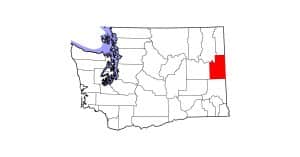Survey: Higher-Level Riders Take and Accept More Risks

Many people accept that working with horses is dangerous—especially more experienced riders or those working with horses for financial gain, said Meredith Chapman, PhD, of The Appleton Institute at Central Queensland University, in Wayville, and Safety in Focus in Narrabri, both in Australia.
“These people are often seen as leaders and influencers in the equestrian industry,” Chapman said. “Many of our inexperienced equestrians look to them for safety advice and directives, and if we are prepared to disregard basic safety principles for the sale of a horse or a blue ribbon, what are we teaching the younger generation, and what will the tally of incidents, injuries, and fatalities be like in another 10 years’ time?”
One-Third of Riders Are ‘Fully Prepared’ To Accept That Riding Is Dangerous
Chapman and her fellow researchers surveyed nearly 1,300 equestrians in 25 countries about their views on risk and safety in connection with horses. More than one-third of respondents said they were “fully prepared” to accept the risk of injury when working with horses, and 10% reported there was nothing they could do to mitigate that risk.
The most experienced riders and those who worked with horses professionally appeared most likely to accept that there would be risks to their safety, Chapman said. These same groups of people were also more likely to take risks with horses such as riding horses known to be dangerous, riding without a helmet, not checking tack for wear or damage, or skipping groundwork with the horse before mounting.
The findings are “disturbing,” said Chapman. And they might reflect a misguided desire to appear accomplished in the equestrian world—at the price of safety to themselves and to equestrians who admire these advanced riders.
“There seems to be a theme in life that we have to look or perform like the ones at the top of the tree or in the spotlight to be seen as successful, acknowledged, or popular,” Chapman said. “In the horse world I see this as very dangerous, and it often endorses the fast-track approach to the top, no matter what, and taking shortcuts and being a risk-taker. But this is so far from truth and very unfulfilling. Horses and humans need time to connect and learn as a duet. Overconfidence can contribute to an unstable foundation, and this is when safety shortcuts are often taken, resulting in undesired outcomes.”
Beyond Statistics, Science Should Investigate Horse and Human Behavior To Reduce Risks
While many studies have focused on statistics—looking at injury rates and fatalities—researchers often overlook the essential aspect of accident prevention, said Chapman.
“Taking a more scientific approach to examine why incidents are still occurring during human-horse interactions despite some safety interventions is the only way we are going to mitigate some of the risks when interacting with horses,” she said.
In particular, it’s important to investigate behavior—specifically, the behavior of both species.
“We need to look into the behaviors of both humans and horses,” Chapman said. “Why do humans respond differently around horses, taking risks even when they acknowledge the dangers? And we need to examine different horse breeds to understand their behaviors, herd instincts, and social and welfare needs as we domesticate them and change their lives. We need to examine breed types as being ‘fit and suitable’ for different equestrian disciplines. And we must look at what training methods assist in improving human-horse relationships and explore how we manage the human need to compete and win, while often throwing away all safety values for a blue ribbon.”

Written by:
Christa Lesté-Lasserre, MA
Related Articles
Stay on top of the most recent Horse Health news with












